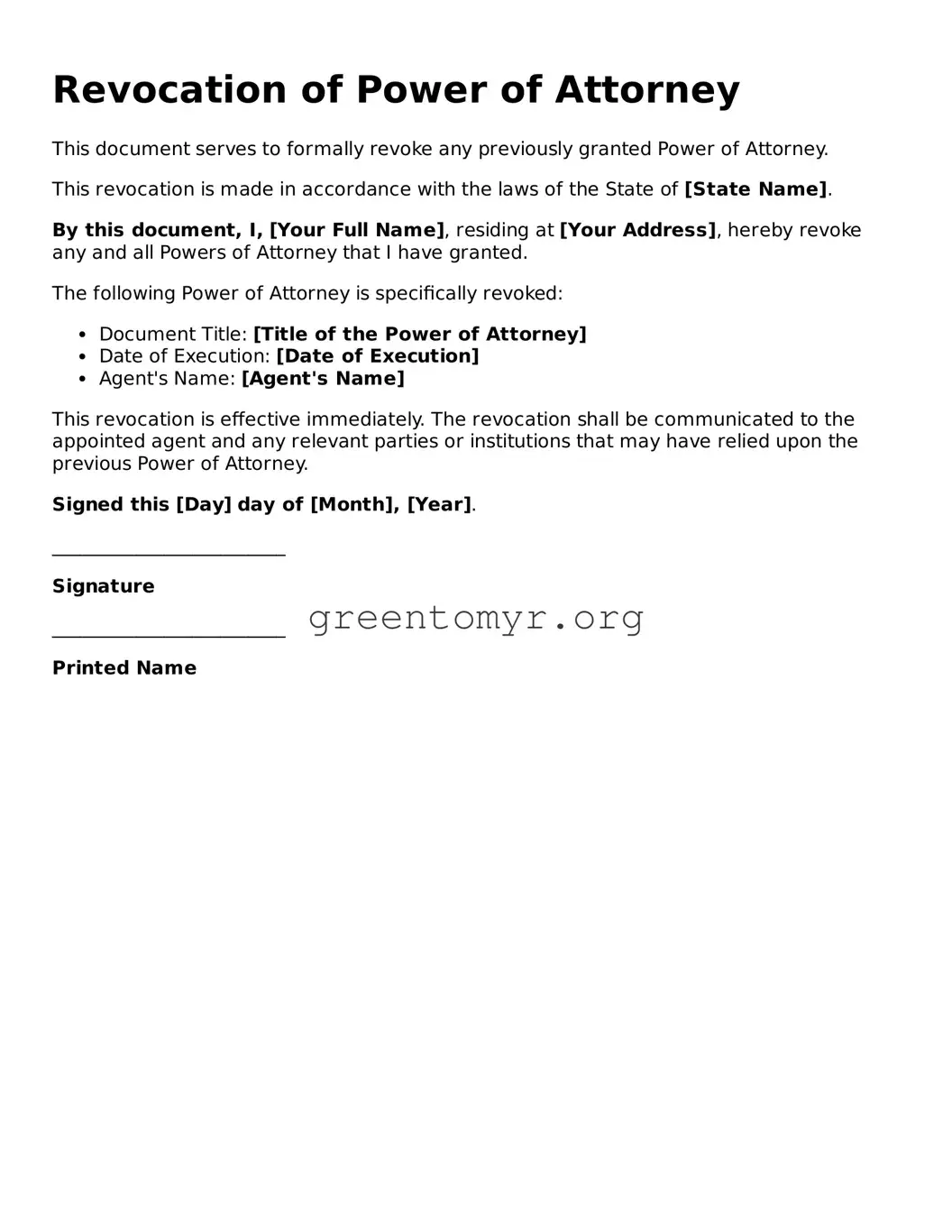Valid Revocation of Power of Attorney Form
A Revocation of Power of Attorney form is a legal document used to terminate the authority previously granted to someone to act on your behalf. This form is essential for individuals who wish to regain control or wish to ensure that any previous appointments are officially nullified. Consider taking this important step today by filling out the form; click the button below to get started.
